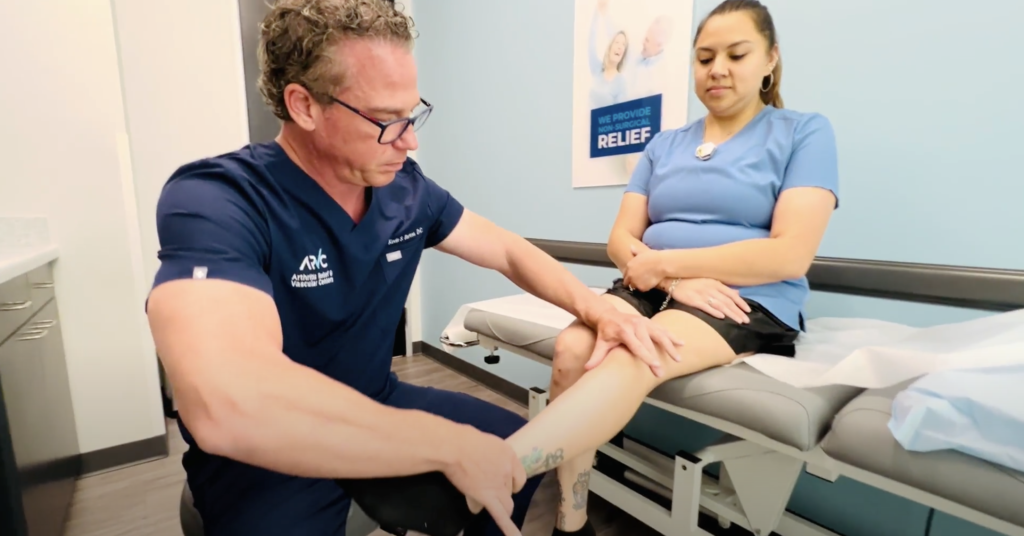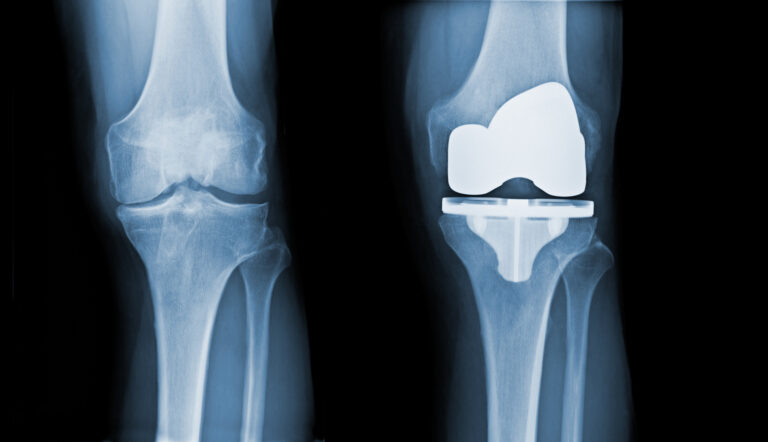Knee pain from arthritis can be more than just a daily annoyance; it can steal your mobility, your independence, and your joy. If you’ve been told your options are limited, or that major surgery is your only eventual path, it’s time to take a closer look. While traditional treatments have their place, there are advanced, often less-discussed, options that might offer you significant relief and a better quality of life – perhaps without the need for immediate major surgery.
At Arthritis Relief & Vascular Centers (ARVC), we believe in empowering you with comprehensive information. Let’s explore the full spectrum of knee arthritis treatments, including what might not always be highlighted in a typical orthopedic consultation.
Understanding Knee Arthritis: More Than Just Wear and Tear
Knee arthritis, most commonly osteoarthritis, involves the breakdown of cartilage – the smooth, cushioning tissue that covers the ends of your bones within the joint. As this cartilage wears away, bones can rub against each other, leading to:
- Pain (often worse with activity, but can become constant)
- Stiffness, especially in the morning or after rest
- Swelling and warmth in the knee
- Creaking or grinding sensations (crepitus)
- Decreased range of motion and difficulty with daily activities like walking or climbing stairs.
While osteoarthritis is common, other forms like rheumatoid arthritis (an autoimmune condition) or post-traumatic arthritis can also affect the knee. A key factor in the pain and inflammation associated with knee osteoarthritis is often the abnormal growth of new blood vessels and associated nerves in the inflamed lining of the knee (the synovium). This process is called angiogenesis.

The Conventional Treatment Path: What You’ve Likely Heard
When you first seek help for knee arthritis, the typical path often involves
- Lifestyle Modifications:
- Weight Management: Losing excess weight can significantly reduce stress on the knee joints.
- Exercise: Low-impact exercises (swimming, cycling, walking) and physical therapy can strengthen supporting muscles, improve flexibility, and reduce pain.
- Assistive Devices: Canes or braces can provide support and offload the affected joint.
- Medications:
- Over-the-Counter Pain Relievers: Acetaminophen or NSAIDs (like ibuprofen, naproxen) for pain and inflammation.
- Prescription Medications: Stronger NSAIDs, duloxetine, or sometimes tramadol.
3. Standard Injections:
- Corticosteroid Injections: Can provide temporary relief from pain and inflammation.
- Hyaluronic Acid (Viscosupplementation): A series of injections to help lubricate the joint, mimicking natural joint fluid.
- The Challenge with “Blind” Injections: Often, these injections are performed “blind,” meaning the practitioner relies on feeling anatomical landmarks. As highlighted in studies (e.g., in The Journal of Bone and Joint Surgery), a significant percentage of these blind injections (sometimes 25-30% or more) may miss the intended target within the joint. This can lead to reduced effectiveness or discomfort.
4. Arthroscopy – A Closer Look:
- Knee arthroscopy is a minimally invasive surgical procedure where a small camera and instruments are inserted into the knee to diagnose and sometimes “clean up” minor issues like loose cartilage or meniscal tears.
- Important Note for Significant Osteoarthritis: While once commonly used, arthroscopy for widespread, significant osteoarthritis (often called a “clean-out” or debridement) is no longer widely recommended as a primary treatment. Multiple studies have shown that for advanced OA, the benefits of arthroscopic debridement are often short-lived and do not typically alter the long-term progression of arthritis or meaningfully delay the need for more definitive treatments. It may still have a role in specific situations, like addressing a mechanical symptom from a meniscal tear alongside mild arthritis, but not usually for advanced wear and tear itself.
5.- Joint Replacement Surgery – The “Final” Step?
- replacement surgery is often presented as the definitive solution.
- Total Knee Replacement (TKR): The entire knee joint surface is replaced with artificial components.
- Partial Knee Replacement (Hemiarthroplasty): Only the damaged portion of the knee joint is replaced. This is suitable for a smaller subset of patients whose arthritis is confined to one compartment of the knee.
- Pros: Can provide significant pain relief and restore function for many who are good candidates.
- Cons:
- Major surgery with associated risks (infection, blood clots, anesthesia complications, implant loosening or wear over time).
- Significant recovery and intensive rehabilitation period required.
- Patient Dissatisfaction: It’s important to be aware that a notable percentage of patients (studies suggest a range, but some indicate around 10-20%, with historical reports sometimes citing up to 30%) may not be fully satisfied with the results of their knee replacement. This dissatisfaction can stem from various factors, including unmet expectations, persistent pain, stiffness, or functional limitations. Some of this unhappiness can be attributed to factors like poor patient selection, where underlying issues or the complexity of their pain weren’t fully addressed by the replacement alone.
- Limited Post-Surgery Pain Relief Options: If pain persists after a knee replacement, treatment options become significantly more limited. Crucially, standard joint injections (like corticosteroids or hyaluronic acid) directly into the replaced joint are generally contraindicated due to the high risk of causing a serious implant infection. This can be devastating, often requiring further major surgery to clean or revise the implant.
- The Challenge of Persistent Pain: For patients who continue to experience knee pain after a total knee replacement, and once physical therapy has been exhausted, finding effective relief can be difficult. However, advanced procedures like Genicular Artery Embolization (GAE) are emerging as a promising, minimally invasive option offered at specialized centers like ARVC. As we’ll discuss, GAE can help address inflammation and pain even after a replacement.
Beyond the Conventional: The ARVC Approach to Knee Arthritis
At Arthritis Relief & Vascular Centers, we believe there’s often more to the story than just “meds, then eventual surgery.” We specialize in advanced, minimally invasive, and precisely targeted treatments that can offer substantial relief, potentially delay or even avoid the need for major surgery, and get you back to doing what you love sooner.
The Power of Precision: Fluoroscopically Guided Injections
anatomy, joint deformity, or advanced arthritis like significant osteoarthritis, our joint injections are guided by advanced imaging technology to ensure precise placement.
- What is Fluoroscopy? We utilize fluoroscopy, a specialized low-dose digital X-ray system, that allows our experienced physicians to see inside your joint in real-time during the injection procedure. Think of it as a live map, directing the therapeutic medication precisely to the source of your pain.
- Why is Guided Imaging Crucial, Especially for Knee Osteoarthritis? Patients with significant knee osteoarthritis often have:
- Advanced Arthritis & Joint Space Narrowing: The target area can be very small or altered.
- Bone Spurs (Osteophytes): These can block the path for a blind injection.
- Joint Deformity: Standard landmarks may no longer be reliable.
- Challenging Anatomy: Factors like excess weight or joint effusion (fluid) can make it very difficult to accurately access the joint space without visual guidance. In these cases, the risk of a blind injection missing the joint is much greater. Fluoroscopic guidance allows us to navigate these complexities, ensuring the medication is delivered exactly where it needs to go for maximum benefit.
- Benefits of ARVC’s Guided Injections (for native joints):
- Maximum Effectiveness: Ensuring accuracy in delivering medication directly into the joint space.
- Enhanced Safety: Seeing internal structures helps avoid nerves and blood vessels.
- Improved Comfort: Accurate placement often means a smoother, less uncomfortable procedure.
- No Guesswork: We confirm correct placement before medication is administered.
- Advanced Non-Surgical Options at ARVC: Genicular Artery Embolization (GAE)
- Genicular Artery Embolization (GAE): In knee osteoarthritis, a cycle of chronic inflammation often leads to angiogenesis – the formation of new, abnormal, and leaky blood vessels in the lining of the knee (synovium). What many don’t realize is that along with these new blood vessels, tiny, hypersensitive nerve endings also tend to grow. This combination of abnormal vascularity and new nerve ingrowth is a key contributor to the persistent pain and ongoing inflammation experienced in an arthritic knee.
- How it works: GAE is an innovative, minimally invasive procedure that precisely targets this underlying problem. Performed by our Interventional Radiologists under sophisticated imaging guidance, tiny medical-grade particles are delivered through a catheter to block these specific abnormal new blood vessels that are fueling the inflammation. This isn’t about broadly restricting all healthy blood flow to the joint; rather, it’s a highly targeted approach to reduce the abnormal vascularity associated with angiogenesis in the inflamed synovium. By addressing this source of inflammation and the associated problematic new blood vessels, GAE also impacts the ingrowth of hypersensitive nerve endings that travel with them, leading to a significant reduction in pain and improved function for suitable candidates with knee osteoarthritis. As mentioned, it can also be a valuable option for managing persistent pain even after knee replacement surgery.

Making an Informed Decision for Your Knees
Knee arthritis doesn’t have a one-size-fits-all solution. While joint replacement can be life-changing for some, it’s a major undertaking with potential downsides and limitations. It’s crucial to understand all your options, including less invasive but highly precise treatments that may provide significant relief and improve your function.
Our commitment to using image guidance whenever clinically indicated, especially in cases of significant osteoarthritis or other anatomical challenges, reflects our dedication to providing the safest, most comfortable, and most effective care possible.
Discover Your Options at ARVC
If knee arthritis is holding you back, and you’re looking for a comprehensive evaluation and discussion of all your treatment options, including advanced, minimally invasive, image-guided therapies, we invite you to contact Arthritis Relief & Vascular Centers.
- Call us today at 210-899-0384
- Visit our website at www.arvcenters.com to learn more or to schedule a consultation.
It’s time to get a clearer picture of your knee health and the paths to relief.


